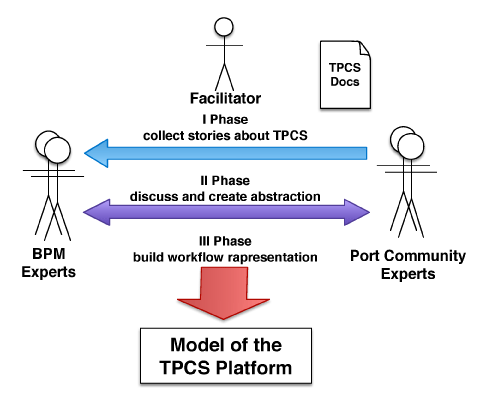by Giorgio O. Spagnolo, Eda Marchetti, Alessandro Coco and Stefania Gnesi, ISTI-CNR
In recent years, business process management has become increasingly popular in many industrial contexts and application domains. This is mainly because it facilitates the modelling of process specifications and the development of an executable framework, while providing concise definitions and taxonomies. The data acquired during the business process execution phase can be used for quality analysis and to demonstrate compliance to specifications. We describe an experience in the real world context of the Livorno Port Authority.
Business process management usually relies on a Business Process Model (BPM), specified using one of the available Business Process Modelling Notations (BPMN). Working with the Livorno Port Authority, we successfully adopted BPM data analysis to find commonalities and discrepancies between the mandatory guidelines for controlling the arrival and departure of goods and the current implementation of the shipping systems known as the Tuscan Port Community System (TPCS) [3].
TPCS is a web-services based platform with multilevel access control and data recovery facilities, which aims to support and strengthen the management of shipping lanes according to Italian regulations. TPCS processes a huge amount of information, enabling a reduction in costs and the streamlining of administrative procedures. It can be used for the complete management of all connected applications handling cargo movements and import/export operations, and involving all the actors interested in the information flow, such as shipping agencies, custom forwarders, freight forwarders, terminals, hauliers, and also the Control Authorities.
The users can generate and manage Cargo Manifests during export, and Unloading Lists during import operations. In both operations, users can interact with the platform in order to know the status of goods (e.g. loaded or unloaded, cleared for customs etc.). They can also request and receive goods certificates and authorizations (e.g. phytosanitary authorization) for dangerous goods via the SUD (Sportello Unico Doganale - Customs Single Window) interface.

Figure 1: The actors involved in the TPCS and their interaction.

Figure 2: Methodology applied to create the model.
A storytelling approach has been used to create the business process model for the TPCS. The method is summarised in Figure 2, where three main stakeholders carry out the tasks proposed by the storytelling methodology: the Tellers(Port Community Experts), the Facilitator and the Modellers(BPM Experts). The Tellers are those individuals who participate in the process and therefore have domain knowledge. They are asked to describe their activities explicitly through a story. The Facilitator is an experienced professional in the application domain who helps the story tellers to produce coherent stories and the first abstraction of the models. The Modellers are process analysts who refine the graphical model developed based on abstractions extracted from the stories.
An event logger has been integrated into the TPCS code system in order to monitor the information exchange within the platform and between the different web-services, and to collect data to assess conformance to the BPM specification.
Conformance checking techniques have been used to relate events in the event log to activities in the process model and compare them [1-2]. The experience highlights important challenges in the application of process mining techniques and enables inconsistencies detected during the process execution to be promptly corrected. The mining activity has been confirmed to be a useful means for quality assurance and the checking of software in operation. However, this experiment has also shown that the identification of the BPM elements can be a key factor for the final results. The identification of the rules, the policies, the roles, and the responsibilities, as well as the interactions between users and the platform represent the main criticalities when deriving an accurate business processes model and when correctly managing it.
Once the business process of the TPCS platform was derived using the story telling techniques, the platform was then equipped with the activity process log. Next, using process mining techniques on the log of the platform with the process model derived, we performed conformance analysis. The results obtained were used to investigate the behaviour of the platform and validate the process model.
This work is a contribution to the industrial application of formal techniques for the monitoring of business processes.
References:
[1] W. van der Aalst, et al.: “Replaying history on process models for conformance checking and performance analysis”, Wiley Int. Rev. Data Min. and Knowl. Disc., March 2012.
[2] R. M. Dijkman, et al.: “Semantics and analysis of business process models in BPMN”, Inf. Softw. Technol., November 2008.
[3] G. O. Spagnolo, et al.: “An experience on applying process mining techniques to the Tuscan Port Community System”, LNBI Proc., 238, 2016.
Please contact:
Giorgio O. Spagnolo, ISTI-CNR, Italy











